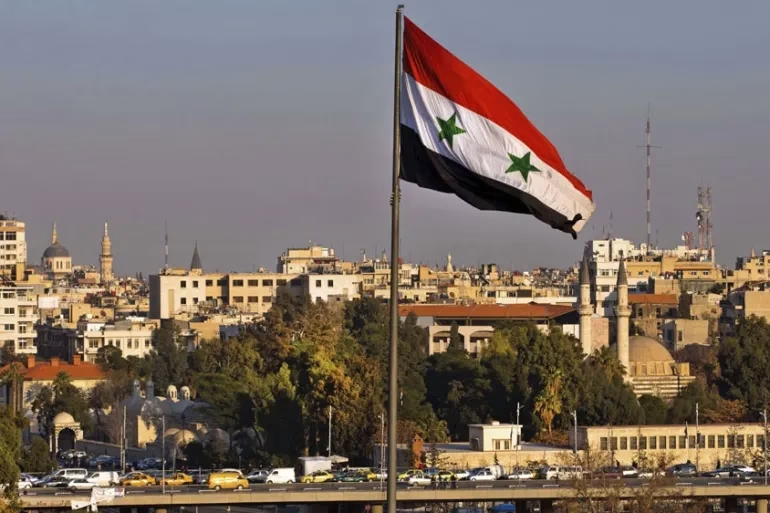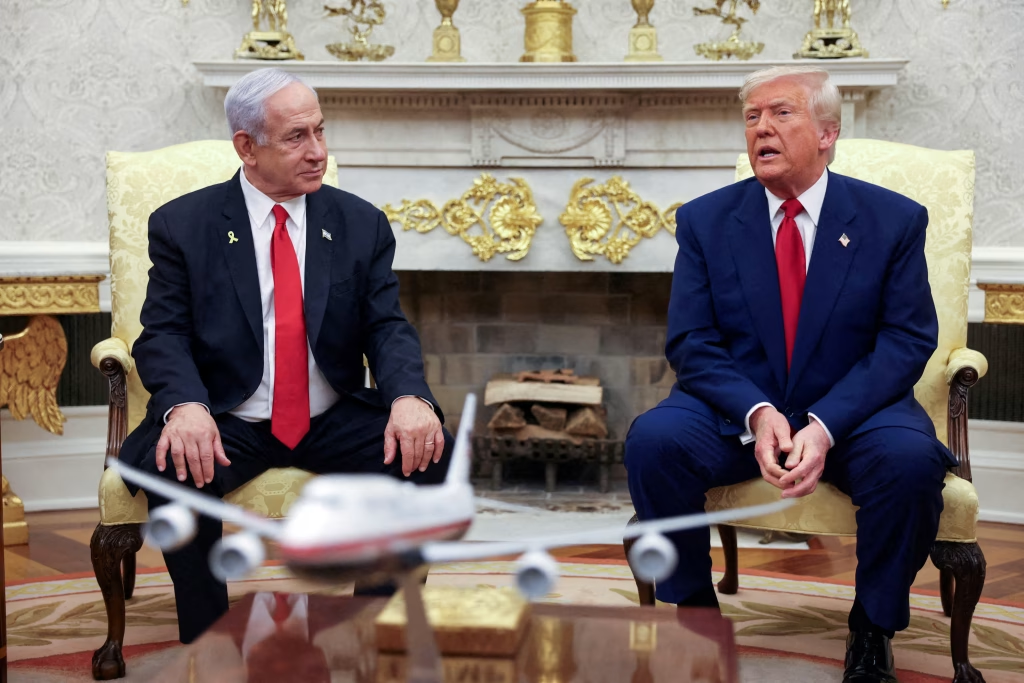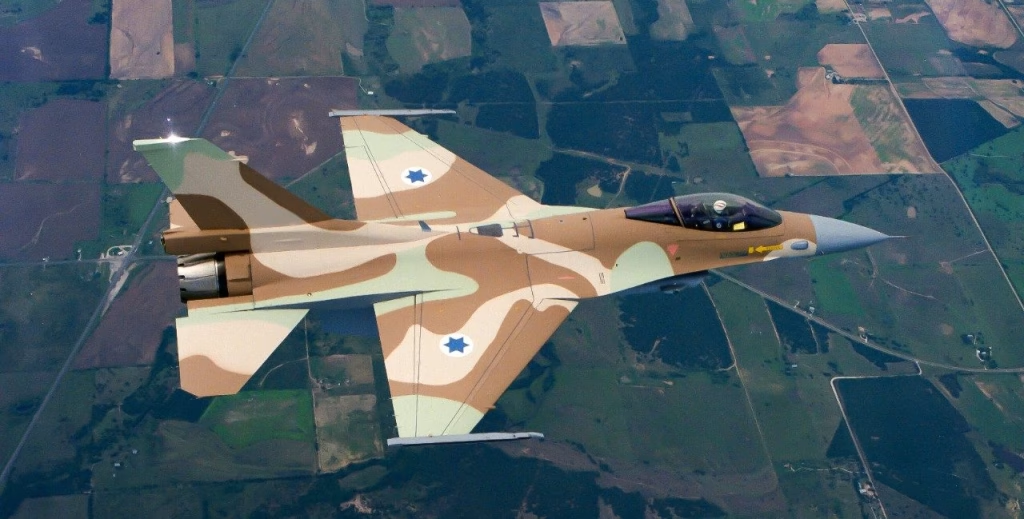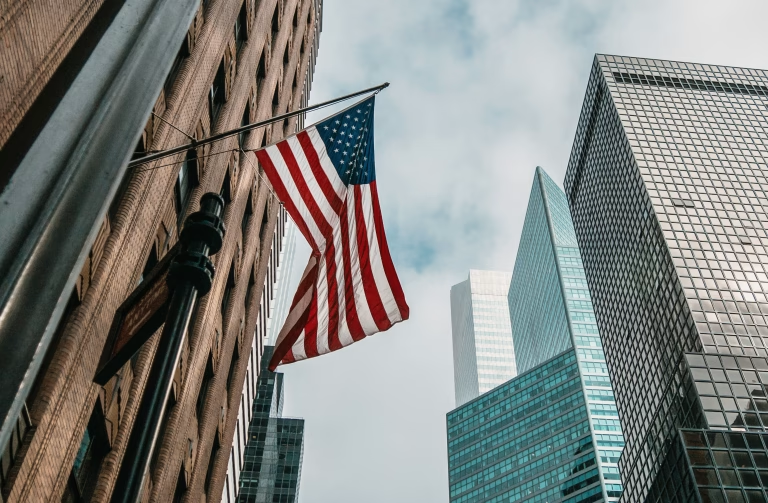
Syria replaces Palestine and Iran as the hottest spot in the Middle East
After the failure of the ‘Trump Riviera’ project in Gaza and the break with Musk, the White House is trying to save the Middle East deal, but Netanyahu is playing his own game. Meanwhile, a new front is erupting in Syria — now the Druze are under attack, and Israel is forced to respond, risking conflict with Turkey.
Blockchain for Gaza and Trump’s shattered dreams
After the ‘peace’ between Israel and Iran, everyone was waiting for a new escalation between these countries or an intensification of the confrontation in Palestine. And the big intrigue arose when, in July, Benjamin Netanyahu went to Washington for the first time since April to meet with Trump. The situation in the Middle East has changed dramatically over the past three months, and a scandal has erupted around the White House over the publicised plans to rebuild Gaza with the eviction of Palestinians. The project to rebuild the enclave looked fantastic, and there were plans to create ‘Trump’s Riviera’ ‘Musk’s Smart Industrial Zone’ and a free trade zone to provide a corridor from India through the Middle East to Europe. They wanted to tokenise all the land in Gaza and sell it to investors via blockchain, bringing the cost of the project to $320 billion. But Musk fell out with Trump, so no one will be assembling Tesla electric cars in Gaza now, and it is unlikely that the Palestinians, who were offered $9,000 to leave, would have agreed to resettle.
In addition, these plans caused outrage among human rights organisations and the UN. Trump’s relationship with Netanyahu also took a turn for the worse after the latter ignored his request not to attack Iran. This led to an expected rise in oil prices, a 0.3% increase in inflation in the US, and a drop in the American president’s approval ratings. But despite his militaristic manoeuvres and intransigence, the Israeli prime minister still faces a difficult election in 2026. Trump’s team is surely already preparing for a change of power in Israel.

At the same time, dialogue with Iran is resuming, but negotiations on lifting sanctions in exchange for halting uranium enrichment will obviously take a long time, as will the restoration of the 2020 Abraham Accords, under which the White House would like to secure investments from the Gulf monarchies for the reconstruction of Gaza. The depletion of the Pentagon’s arsenals, which will take many years to replenish, also had an impact, limiting the US’s military capabilities in the region. But Trump needed to conclude a ‘big Middle East deal’ as soon as possible to heal the rift in American society, which was tired of endless conflicts. However, Netanyahu had his own plan, because peace was tantamount to political defeat for him, and perhaps even prison.
Netanyahu’s visit to Washington took place against the backdrop of the cultural wars that are commonplace in the United States. Tucker Carlson, who criticises Trump for the Iranian operation, even interviewed Iranian President Masoud Pezeshkian beforehand, which was imbued with sympathy for Tehran. Many Democrats have increased pressure on Israel. Zohran Mamdani, who won the New York primaries, promised to arrest Netanyahu at the request of the ICC. Support for Israel in the US has fallen sharply, from 60% in 2023 to 37% today. Netanyahu, realising the precariousness of his position, nominated Trump for the Nobel Peace Prize for the third time among 300 other candidates in an attempt to retain at least some support from Washington. The Israeli prime minister also fears that he may need American asylum in the future due to his criminal cases. At the same time, he is fighting for reduced military aid — pro-Ukrainian lobbyists such as Keith Kellogg have secured the transfer of some weapons, including Patriot missiles, which weakens Israel’s defence capabilities. The main threat now comes not from Iran, but from Turkey: Erdogan’s technical capabilities and connections with Trump’s team make Ankara a more dangerous adversary than Tehran.
Turkey’s bloody game in Syria
In mid-July, Istanbul decided to send a clear signal to Israel by organising a second brutal attack on Netanyahu’s Druze allies in the province of As-Suwayda. Although even President al-Jolani’s Syrian troops did not formally take part in it, and everything was positioned as ‘clashes between Druze and Bedouins’. It was clear to everyone that, following the genocide of the Alawites, official Damascus was trying to finally deal with the rebellious Druze, who had managed to repel attacks earlier this year. It was also obvious that the suppression of the Druze by Syrian Islamists, under the protection of the Turks, would lead to systematic attacks on the Golan Heights, replacing the ‘usual’ attacks by Hezbollah from Lebanon for the Israelis. That is why the Israeli Air Force immediately began striking columns of jihadists arriving in As-Suwayda and entrenched in neighbourhoods of the provincial capital.

In areas where the jihadists managed to gain a foothold, shootings began — footage similar to the March massacres of Alawites appeared online. Militants fired Grad rockets at Druze neighbourhoods, while Israeli drones struck Syrian multiple launch rocket systems. The Israeli parliament discussed the elimination of al-Jolani, but even his removal will not solve the problem — hundreds of thousands of radicals continue to receive support from Turkey and Qatar. Meanwhile, the Lebanese army and Druze militias have fortified the border, and the Kurds have moved equipment to the bridges across the Euphrates, although Turkey may open a second front against them.
Initially, it seemed that Syria would retreat — militants began to leave As-Suwayda, and Damascus announced that those responsible would be punished. However, after warnings, the IDF struck the Syrian General Staff headquarters, but attacks on the Druze continued. Israeli Minister of Defence Israel Katz promised to protect the ‘Druze brothers’, although the effectiveness of air strikes alone is questionable. Soon, footage appeared from the captured hospital in As-Suwayda showing numerous corpses, but Turkish media later showed the same building cleaned and without traces of blood. At the same time, a video spread showing a militant from the HTS group (which was allegedly ‘previously’ led by al-Jolani) waving a sabre while reciting a verse from the Koran: ‘They will cut off their hands and feet on opposite sides’, which finally exposed the true intentions of the attackers.
At the same time, al-Jolani found a way to shift the responsibility to ‘third forces’, and the Bedouin tribes of Syria, allegedly after violence against their fellow tribesmen, declared mobilisation against the Druze of As-Suwayda and advanced without the direct support of al-Jolani’s militants. Their group was estimated to number 50,000 people, and it was understood that indirect support for them was being provided in one way or another, and the Syrian leadership clearly insisted on creating a ‘Sunni Islamic nation’ out of the country, exterminating or bringing minorities to their knees, and no Israel could stand in their way.
As a result, a truce was reached in the province of As-Suwayda and fighting subsided in almost all areas, but the previously belligerent Israel allowed Damascus to send forces into southern Syria to ‘maintain order’, which was tantamount to an interim victory for the jihadists led by al-Jolani. The limited deployment of regime forces to southern Syria and the establishment of physical control over the administrative borders of the province of As-Suwayda through the deployment of public security posts were permitted, and to ensure conditions for the safe deployment of forces, the agreement introduced a ‘temporary regime of exceptional security in border villages’ for a period of 48 hours. At the same time, the agreement mockingly guaranteed the safe and unhindered exit of the remaining members of the Bedouin tribes within the province, without mentioning the Druze, who clearly intended to continue their resistance.
It was clear that the situation in southern Syria was gradually freezing, and the parties were beginning to rearm and prepare for new clashes. The most tragic scenario was unfolding, and the situation was descending into bloody chaos, with Syria replacing Palestine and Iran as the hottest spot in the Middle East. And for Israel, Iran was replaced by Syrian jihadists under Erdogan’s wing as the most dangerous threat to the state.

